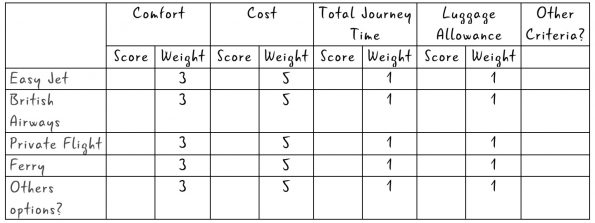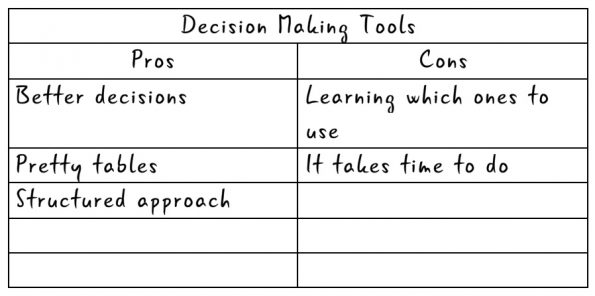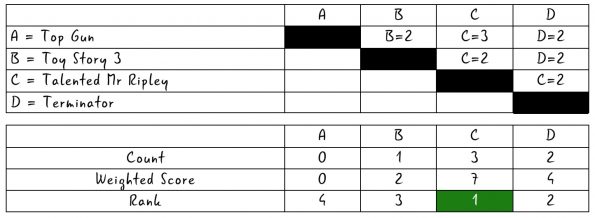Tools for Decision Making
I have blogged previously about a simple technique for decision making – a 4 box model. In this blog I’ll share some other decision-making tools namely:
- weighted decision-making grids
pros and cons
paired comparison analysis
Weighted Grid Analysis
This technique is useful when making a decision when there are many factors and alternatives to take into account.
- List the options as row labels and the factors as column labels
- Work out the relative importance of the factors in the decision and show them as numbers to give each factor a weight
e.g. 1=Not Important, 5=Critical - Work through and score each option for each of the important factors Score from 0 (poor) to 3 (very good)
- Multiply each of the scores by the weighting to reveal the relative importance
- Add up the weighted scores. The highest wins
For example: you need to get to Spain to visit a friend…

This is an incredibly powerful tool for comparing options. weighted grid analysis often sits behind commercial evaluation of tenders as it offers a way to boil down many factors or different importance to a single score.
Pros and Cons
This is like a simplified weighted grid analysis. For each option of the decision, you list all the positive outcomes (pros) and the negative outcomes (cons). The pros and cons of using decision-making tools:

This is a simple system but a drawback is that a list of potential minor cons might drown out a small list or really powerful pros (or vice versa). A modification to this system to overcome that problem is to score each listed attribute out of 5 and count the score rather than the number listed.
Paired Comparison Analysis
This technique is useful when there are no clear objective criteria and priorities to underpin a decision. Rather than making an arbitrary decision paired comparison analysis can bring a structured subjective decision.
- Make a list of things that need to be compared. Assign each option a letter
- Put the letters in a grid. Block Out squares where data would be duplicated
- Within each cell compare the options. Decide which is most important
- Give the letter a rating to show how important the choice is e.g. 0 = no difference, 3 = very important difference
- Consolidate the results by adding up the values for each option. Convert to a percentage as the share of points out of the sum of points
So if for tonight’s movie night we want to decide which film starting with the letter T to watch. First, we would list the options and create the table

And then we can compare Top Gun against the other movies, then Toy Story 3, working our way through the table

When we add up the scores we get a ranked list.

